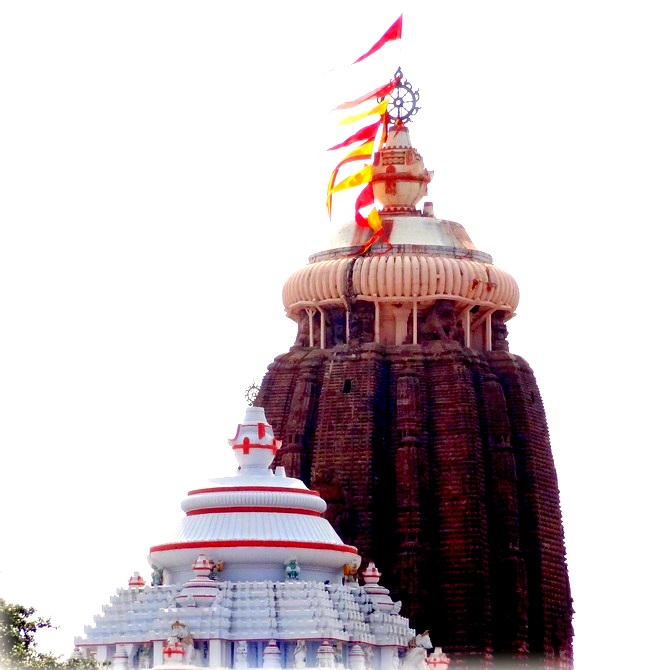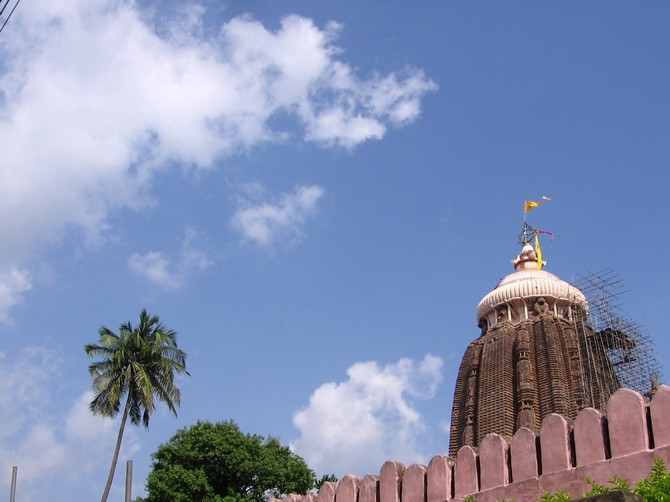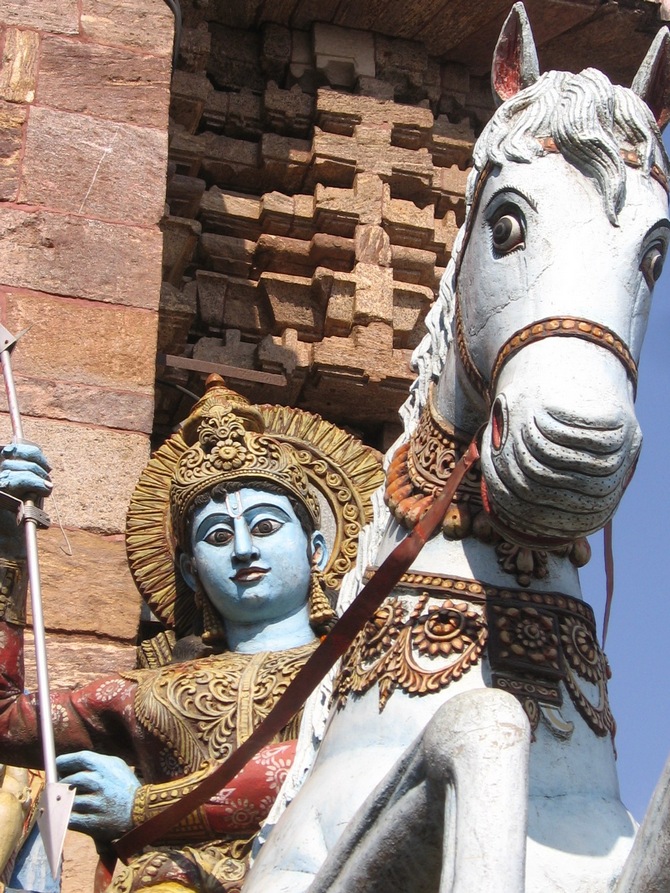 | « Back to article | Print this article |
Odisha travel: In the land where the Lord feasts
It is believed that the Lord sleeps in Badrinath, bathes in Rameshwaram and eats in Puri.
This is the reason why the prasad at Puri is considered especially sacred.
The food is cooked in near darkness and brought to the sanctum in similar fashion for it is believed that even sunlight will contaminate it.
Odisha, where Puri is located, may not exactly be on the top of Indian tourists. But it should be says Deepak Kripalani.
Kripalani had earlier written this five-part travelogue of his journey through Punjab.
Now he takes us with him through India's eastern state that recently saw the largest-ever evacuation before Cyclone Phalin hit its coasts earlier this year.
This is the first part of his travelogue.
Read part two here: From Puri and Konark and beyond -- Exploring India's east coast
Odisha is rarely ever in the limelight. Other parts of the country make it to the news for a host of reasons from politics to industry, IT, insurgency, tourism, poverty, terrorism or plain location. Odisha comes across as a backwater in comparison. If you look at socio-economic backwardness as a ticket to infamy, the BIMARU (Bihar, MP, Rajasthan and UP) states grab that attention. The tourist attractions of Konark and Puri? Forget it! Rajasthan, Kerala and Goa are way ahead. At least in popular perception.
The thought of visiting Odisha crossed my mind in early 2009. Until then my interaction with the state had been limited to a few crossings by train to Kolkata and checking ad copy with the Oriya writer at work. I knew very little about the state. A few months later I discovered that the Battle of Kalinga was fought not far from modern-day Bhubaneswar.
That pushed Odisha several notches up in the list of destinations to visit. A day or two after my return from Madhya Pradesh in early October, I knew that Odisha's turn had come.
A week of research changed my impression. I concluded that Odisha was culturally rich. And Odisha reciprocated beyond full measure. History, spiritualism, culture and the land itself. Every experience was a new high.
I arrived in Bhubaneswar in the evening of December 10. The ground was damp from a week of unseasonal showers. All through my visit I experienced an unusual combination of winter and monsoon weather.
The sky was a flat monsoon grey with mist in the distance at dawn and dusk and through Day Three. Early morning ground moisture was indicative of light rain during the night. People moved around in winter clothing.
Fresh air, clean and wide roads with light traffic, plenty of open spaces and the absence of high rises (I don't remember seeing any structure -- the temples apart -- taller than five floors) were my first impressions of the city.
Unlike in Mumbai, there were no ugly political hoardings either. I set off on a 5 km walk after dinner. It felt strange walking on pavements that were 12 feet across on many stretches. Clearly, the rest of the country was missing out on something pleasant.
Odisha travel: In the land where the Lord feasts
Looking back, I am glad Ganesh persisted with me. Having gotten the first guide off my back after trailing me for close to a kilometre (the Jagannath Temple looms large over the Puri skyline and appears deceptively close) as I took in the sights and sounds of Bada Danda (the main thoroughfare along which the Jagannath Yatra makes its way in June-July every year), I ran into Ganesh who offered to show me around for Rs 51.
I was in no mood to take up the offer until I reached the temple gates and found myself accepting his unsolicited tip to locate the footwear stand. The deal still was on shaky ground because I was apprehensive about leaving my cameras and cell phone with the footwear. Ganesh assured me that it was perfectly safe to do so.
Now that we were on, I ran through the list of spots in the temple complex gleaned from research on the net. Ganesh confirmed that he would show me them all.
We started with the Aruna Sthambh, the pillar outside the main entrance, the Singhadwara (Lion Gate). The temple complex is roughly square in shape with four gates, one on each side, the other being the Horse, Elephant and Tiger gates. The pillar was brought from the Sun Temple, Konark a couple of hundred years ago
As we moved along the entrance passageway, we came across Patita Pawana, a painting of the deities in the sanctum, to the right. For hundreds of years, those termed untouchable were denied entry to the temple and had to be content with a darshan of the painting. Amazing, how man can treat another human.
Odisha travel: In the land where the Lord feasts
A sense of awe enveloped me as I entered the complex. This, from the realisation that hundreds of millions must have passed through these gates over the centuries.
I was just one of them. Entering the courtyard, a replica of the Kashi Vishwanath (Benaras) temple is located to the left. We moved on to what is claimed to be the largest kitchen in the world. Badrinath, Rameshwaram, Dwarka and Puri were identified as the four dhams by Adi Shankara during his travels across India at the turn of the eighth century.
Strangely, they form a near-square on the map. They are associated with Satya, Treta, Dvapara and Kali Yuga respectively. It is believed that the Lord sleeps in Badrinath, bathes in Rameshwaram and eats in Puri. This is the reason the prasad at Puri is considered especially sacred. The food is cooked in near darkness and brought to the sanctum in similar fashion for it is believed that even sunlight will contaminate it.
The sanctum is a hall with a high ceiling and no lights. The only light inside emanates from the diyas or streams in from the hall that leads to the sanctum. It is believed that God appeared in a dream to the local ruler and asked him to build a gigantic temple.
After all architects had failed, Vishwakarma, the architect of the Gods appeared as an old man in the king's court. Looking at his frail constitution, the king sent him away. God appeared in the king's dream again, reassuring him that the old man was equal to the task. The old man consented with the proviso that he be locked away alone for 21 days with no food or communication with the outside world.
After 15 days of sounds of activity there was complete silence. Fearing the worst, the queen had the door opened to find the idols unfinished and the architect missing. This is the reason given for the idols being in a state of incompleteness.
Odisha travel: In the land where the Lord feasts
The saint and social reformer Chaitanya Mahaprabhu (1486-1534) spent the last 24 years of his life in Puri. Three depressions in the stone framework of the entrance to the hall leading to the sanctum are believed to be the points where he would place the three central fingers of his left hand and seek darshan of Lord Jagannath. It was overwhelming to be in the same space and do as the great seer had done centuries ago.
The complex has over a hundred temples, one of which houses the idol of Surya that originally was in the Sun Temple, Konark. As we made our way out, Ganesh shared an extraordinary fact about the temple. The deities are considered mortal since the temple is associated with Kaliyug in which all living beings must die.
The event occurs every 12-21 years when the month of Ashad has two full moons. A senior priest is assigned the task of cremation and the temple is off limits that day. New idols are carved out of a particular variety of wood and installed thereafter. The priest dies within a year but is considered to have attained salvation for having performed the cremation rites.
Being surrounded by high walls, it is difficult to get a good picture of the main temple. I walked around it, passed the Horse, Elephant and Tiger gates and returned to the main entrance. But that was on my own after Ganesh had finished showing me around. Long before I bade Ganesh goodbye, I knew that he had his pricing wrong.
With a deep sense of gratitude and joy I paid him four times the amount he asked for. True to his name, I felt he had been divinely ordained to lead the way and make my visit fulfilling.



